 Post Viral Syndrome: Symptoms and Healing Protocol
Post Viral Syndrome: Symptoms and Healing Protocol
You came down with a viral infection. You had a couple of rough days or weeks, but you finally recovered. Or maybe you didn’t? Even though the initial symptoms of your viral infections have passed, you are still not feeling well. You are tired. Maybe you have headaches, muscle pains, sleep issues, respiratory problems, or other nagging symptoms. Weeks, then months, pass, and you are still not your old self.
You are not alone. Post-viral syndrome refers to a group of symptoms that happen after a viral infection. These are chronic symptoms that can last for days, weeks, months, and in some cases, even years after recovering from the initial infection. Unfortunately, most doctors don’t know what to do with this, and other than some pain medication, you may not be getting much help. Fortunately, with the help of some functional lab testing, we can find the root cause of your issues and address them through nutrition, lifestyle, and supplementation.
In this article, I will discuss what post-viral syndrome is. You will learn about the major signs and symptoms of post-viral syndrome. You will learn about the connection between the cell danger response and post-viral syndrome. I will go over who is at most risk for post-viral syndrome.
I will talk about diagnosis and conventional treatment options for post-viral syndrome. I will discuss some important functional lab testing to uncover the root issues of post-viral syndrome. I will share my top natural support strategies for post-viral syndrome, including some key supplements. I will recommend a Cellular Energy Support Pack to support your health.

What is Post-Viral Syndrome
Post-viral syndrome is a health condition or group of symptoms that can happen after a viral infection. During the viral infection, you, of course, feel sick. However, if you have post-viral syndrome, you will feel drained, tired, or otherwise unwell, even after recovery and after your body has removed the virus. Your symptoms can linger for days, weeks, months, and in some cases, even years after recovering from the initial infection.
You can develop post-viral syndrome after a bout of the flu or the common cold. Other viruses that may result in post-viral syndrome include the Epstein-Barr virus (EBV), herpes, pneumonia, and HIV. A COVID-19 infection can also lead to post-viral syndrome or as it’s known with COVID-19, long hauler syndrome or long-COVID.
Long hauler syndrome is a condition characterized by various chronic symptoms after a COVID-19 infection. These long-term symptoms may last for weeks, months, or even a year after recovering from the initial COVID-19 illness. Unfortunately, long hauler syndrome is quite common. According to a 2021 study published in MedRXiv, about 27 percent of COVID-19 patients end up with long hauler syndrome (1).
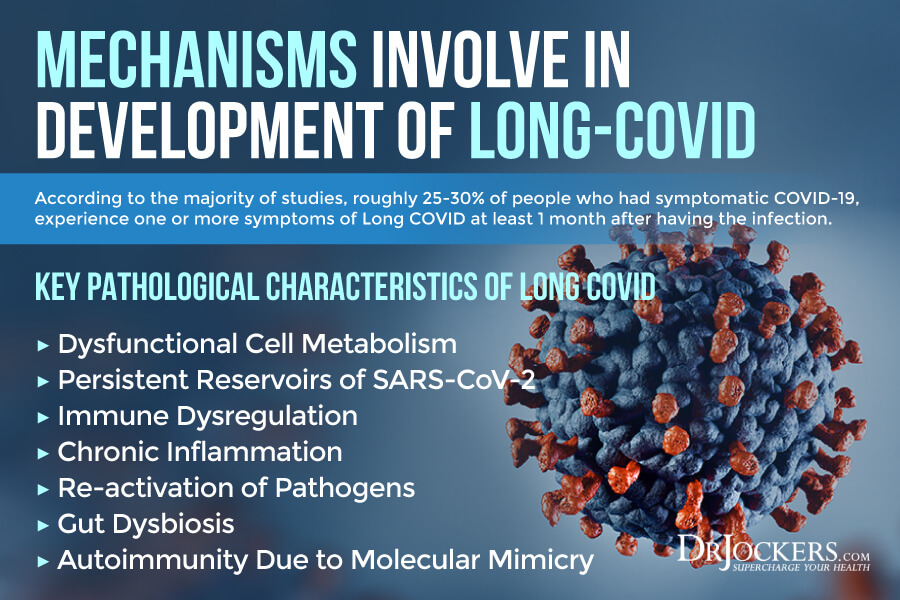
Long Haulers Syndrome:
Another 2021 study published in JAMA Network Open has found that over 30 percent of COVID-19 patients struggle with long hauler symptoms even 9 months after the initial infection (2). They found that 36 percent of people were not able to return to their baseline health even 9 months after the infection.
According to the Public Health Agency of Canada, up to 80 percent of patients experience lasting chronic symptoms 4 to 12 weeks after recovery, 60 percent experience chronic symptoms for 12 weeks or longer, and around 10 percent were unable to go back to work due to their symptoms (3).
The trigger of your symptoms of post-viral syndrome may be the virus itself. Though symptoms of post-viral syndrome are often similar to chronic fatigue syndrome (CFS), there is one major difference. CFS usually begins for no clear reason, seemingly out of nowhere, while post-viral syndrome begins after an infection. With this said, in ME/CFS there is a significant subset that came on after a challenging bout with mononucleosis caused by EBV.

Cytokine Storm and Post Viral Syndrome
Post-viral syndrome may be the left-over effect of a cytokine storm. Cytokines got their name from the Greek words cyto (cell) and kinos (movement). They are small proteins that your body’s cells may release in different areas. For example, the cells of your immune system may release them as a response to an infection and to trigger inflammation for your protection. The problem occurs when your body’s reaction to an infection goes into overdrive.
Countless research studies, including a 2021 review published in Nature have found that the cytokine storm plays a big role in COVID-19 (4). As the COVID-19 virus enters the lungs, it triggers an immune response that prompts immune cells to fight the virus and create localized inflammation. In some patients, the body releases excessive or uncontrolled levels of cytokines, which results in hyperinflammation and may lead to serious complications or even death.

This hyperinflammation and consequent damage are called the cytokine storm. Experiencing a cytokine storm and consequent serious symptoms of a virus can lead to post-viral infection. However, we know that in COVID-19. post-viral infection or long-hauler syndrome can occur even in patients that have very mild symptoms.
According to a 2018 review published in Frontiers in Pediatrics, if the virus overloads the immune system and can’t clear out it may cause post-viral symptoms (5). According to a 2015 study published in Neural Regeneration Research, the viral infection may cause neuroinflammation, which may be responsible for some of the symptoms of post-viral syndrome (6).
Another reason behind post-viral syndrome may be the result of the lingering effects of the virus that didn’t clear out completely, which may explain why some people experience post-viral issues even after a milder infection.

Major Signs & Symptoms of Post-Viral Syndrome
Signs and symptoms of post-viral syndrome can vary from person to person. You may only have one or two symptoms, but you may have a laundry list of them. Symptoms may range from mild to severe. They may interrupt your work, social life, and daily activities. One of the most common symptoms of post-viral syndrome is fatigue, however, there are many other symptoms you may experience.
Signs and symptoms of post-viral syndrome may include:
- Fatigue
- Sleep problems
- Confusion
- Brain fog
- Trouble concentrating
- Memory troubles
- Headaches or migraines
- Dizziness
- Muscle pains
- Stiff joints or joint pain
- Shortness of breath
- Ongoing cough
- Chest pain
- Sore throat
- Congestion
- Loss of smell or loss of taste
- Swollen lymph nodes
- Hormonal issues
- Changes in the menstrual cycle
- Digestive issues
- General pain and discomfort
Since post-viral syndrome can impact your brain, it may cause mood imbalances, depression, or anxiety. However, many patients experience stress or trauma during their viral infection, especially if it involves serious symptoms or hospitalizations. Dealing with ongoing post-viral health issues can also be emotionally taxing and stressful. Thus, people with post-viral syndrome may experience anxiety, depression, and post-traumatic stress.

Cell Danger Response and Post Viral Syndrome
The cell danger response (CDR) is a newly discovered but increasingly covered topic in functional medicine circles for good reason. A 2013 review published in Mitochondrion has described the CDR as a critical evolutionarily conserved metabolic response that is part of your body’s innate defense system (7). The CDR essentially protects your individual cells from cellular threat, danger, and harm. This threat can be physical, biological, or chemical, but if it threatens your cell’s natural ability to ensure homeostasis, it triggers a CDR.
Your mitochondria is the most important component of your cells. It is responsible for creating energy and ensuring function and health. It can also act as an energy sensor within your cells and cellular defense agents.
The goal of your mitochondria is cellular homeostasis and providing enough energy for cellular balance. If there is a significant drop in this energy due to any issue, your mitochondria will recognize this energy drop as a threat to homeostasis and health. If this happens, your mitochondria will turn away from energy production and optimal cell metabolism and will focus on cellular defense.
This is a major shift in your cellular physiology. It’s not surprising that the CDR may play a role in CFS, metabolic diseases, hypothyroidism, and neurological diseases (8, 9, 10, 11). For example, according to a 2021 study published in Neurology, CDR due to heatstroke may play a role in CFS (12). It is not surprising that it may play a role in post-viral syndrome as well. A 2021 review published in Chronic Diseases and Translational Medicine has found that the CDR may play a role in long-hauler syndrome by disrupting the mitochondria (13).

Who is Most at Risk for Post-Viral Syndrome
There are a variety of theories on the possible risk factors for post-viral syndrome. According to current research, the most common risk factors may include (14, 15, 16, 17, 18):
- Obesity
- Insulin resistance
- Gut microbiome imbalance
- High blood pressure
- Autoimmunity
- Weakened immune system
- Cardiovascular disease
- COPD or lung issues
- Other existing and underlying infections
- Other chronic health issues
- Smoking and alcohol addiction

Diagnosis and Conventional Treatment
Diagnosis of post-viral syndrome can be difficult. Your doctor will go over your health history, your recent illnesses, and symptoms. They will usually have to rule out some other potential causes of your symptoms. This will likely involve a physical exam and some blood and/or urine tests to test for anemia, diabetes, hypothyroidism, autoimmunity, or other health issues. When other health conditions are ruled out and it’s clear that your symptoms began after recovering from a viral infection, you may be diagnosed with post-viral syndrome.
Unfortunately, doctors don’t really understand post-viral syndrome and there aren’t any treatment options specifically designed for this condition. Your doctor may offer some over-the-counter or prescription pain relievers. You may be given medication tricyclic antidepressants or selective serotonin reuptake inhibitors (SSRIs) to reduce pain perception and improve mood.
They may recommend rest, physical therapy, yoga, meditation, massage therapy, or acupuncture. They may recommend joining a support group for people with post-viral syndrome. They may also recommend individual therapy or counseling.
Conventional medical practitioners and medical centers are also often overwhelmed, especially with the increased amount of long-haulers seeking care. They are not knowledgeable and also don’t have enough time to deal with post-viral syndrome. Fortunately, functional medicine practitioners, like myself, are experienced in dealing with immune imbalances, chronic inflammation, chronic infections, and chronic health problems, including CFS, fibromyalgia, chronic Lyme disease, mast cell activation syndrome, and autoimmune conditions.
We offer various tests to look at functional health markers of inflammation, immune health, infections, and nutrient deficiencies that can help both diagnosis and treatment. We are well-versed in how nutrition, lifestyle, and holistic health practices can influence your health. By understanding your symptoms and seeing your functional lab markers, we are able to provide personalized recommendations that may support your health.

Functional Lab Testing
One of the most important things when it comes to post-viral syndrome is functional lab testing. With the help of functional lab testing, we are able to look at some underlying imbalances and health issues and look at markers of immune dysfunction, blood viscosity, oxidative stress, and nutrient deficiencies.
Immune Dysfunction
According to a 2020 review published in Integrative Medicine (Encinitas), chronic immune dysfunction is associated with long hauler syndrome and post-viral syndrome (19). Researchers found that immune rejuvenation and resetting the immune system may be critical for recovery. But first, we need to look at your lab markers to check for signs of immune dysfunction.
High or Low WBC
Your white blood cells are an important part of your immune system that help to fight viruses, bacteria, and other foreign pathogens that may cause an infection, illness, or other diseases. If your body is fighting a virus, bacteria, or other substance, your white blood cell count will increase. Certain diseases, including HIV/AIDS and certain types of cancers, may actually lower your white blood cells compromising your immune system. Chemotherapy and some other medications may also decrease the white blood cells in your blood.
A white blood cell count (WBC or WBC count) is used to measure the number of white blood cells in your blood. A WBC count is used to diagnose different illnesses and disorders. Bacterial infections, viral infections, autoimmune diseases, inflammatory conditions, allergic reactions, and some cancers, including leukemia and Hodgkin’s disease, are some health issues that can result in a high WBC count. HIV/AIDS, liver disease, spleen disease, and lymphoma (cancer of the bone marrow) are examples of diseases that can cause low WBC count.
The optimal range is between 5 and 8. Above 8 is usually a sign of acute infection and below 5 is a sign of immune suppression or post-viral syndrome.

NL Ratio
Neutrophil-Lymphocyte Ratio (NLR) is a measure of stress and inflammation that may affect your health. When the body is dealing with chronic inflammation, over time, the lymphocyte levels will drop and the neutrophil levels will rise and cause an imbalance.
NLR is usually measured with the absolute count and we want to see it at roughly 1.2-2.0. If you see that the number of neutrophils is more than twice the amount of lymphocytes it is a sign of chronic inflammation. With post-viral syndrome, NLR could be high or low, but generally low.
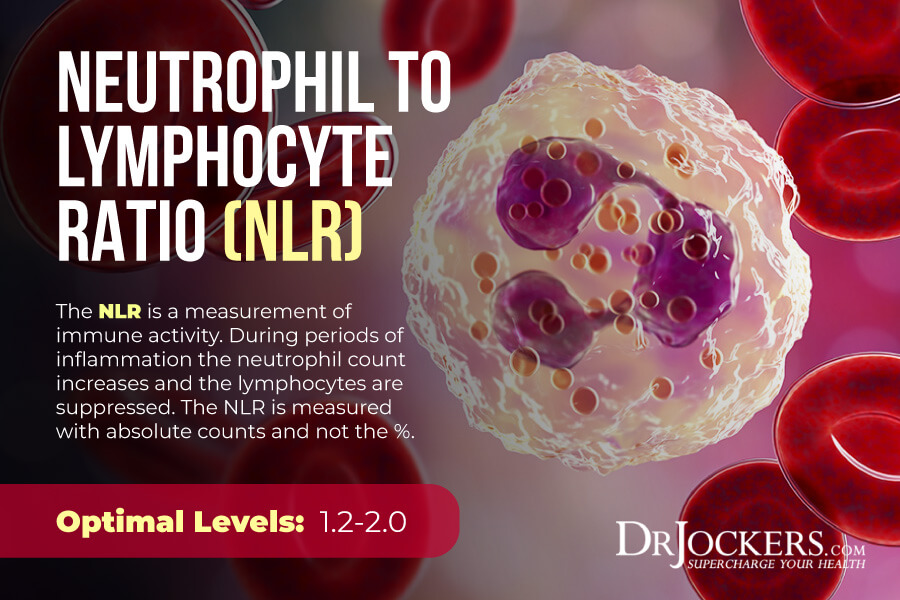
Hs-CRP
The C-Reactive Protein or CRP test is a key test I recommend. It measures a protein (CRP) produced in your liver that indicates inflammation levels in your body.
The clinical range is between 0 and 3 mg/L while the optimal range is 0 to 1 mg/L. When I see levels over 1 mg/L, I know the individual is having an inflammatory response that could be due to acute trauma or chronic conditions. Ideally, we want to see the CRP levels as low as possible, certainly under 1 mg/L and more like 0.1 mg/L (20).

Blood Viscosity
Blood viscosity can determine blood thinning or blood clotting behavior. According to a 2022 study, those who recovered from COVID-19 still have a risk of deep vein thrombosis even 70 day after the recovery, an increased risk of pulmonary embolism 110 days after the infection, and an increased risk of bleeding up to 60 days after the illness (20).
Checking for blood viscosity can check for blood clotting issues and your risk of these issues.

Hematocrit
Hematocrits are the whole blood volume that consists of red blood cells. Hematocrit levels can turn low in iron deficiency anemia or if excessive bleeding has occurred. This value may be high in times of dehydration or polycythemia, which is the overproduction of hemoglobin.
The optimal ranges for hematocrits for men are 39 to 45 percent while for women they are between 37 to 44 percent. High hematocrit levels often mean dehydration or polycythemia vera, which is an overproduction of hemoglobin. Low levels often mean iron deficient or pernicious anemia, bleeding, sickle cell anemia, or overhydration.
Fibrinogen
Fibrinogen is a protein produced by the liver. This protein helps stop bleeding by helping blood clots to form. High levels of fibrinogen can indicate chronic inflammatory conditions and increased blood clotting formation. The optimal level should be between 150 and 285 mg/dL.
As a signaling molecule for tissue repair, fibrinogen is a good marker for how well your body is able to repair itself. If your fibrinogen is optimal, your repair and recovery are probably meeting or outpacing wear and tear, allowing you to properly heal and recover.
Above 285, you are probably deteriorating more rapidly than you’re repairing. Fibrinogen is also a clotting factor marker, so in viral or bacterial infections, for example, high fibrinogen is indicative of a cytokine storm. Pre-cytokine storm levels are also indicative of several chronic diseases, including heart attack and cancer.

ESR
The erythrocyte sedimentation rate (ESR) is a common hematology test to look for inflammation It refers to the rate at which your red blood cells in anticoagulated whole blood go down in a standardized tube over a period of one hour.
This should be less than 10 mm/hr for good blood viscosity levels. The clinical range is 0-40 mm/hr, so it is rare to see this flagged but common to see a functional high level.
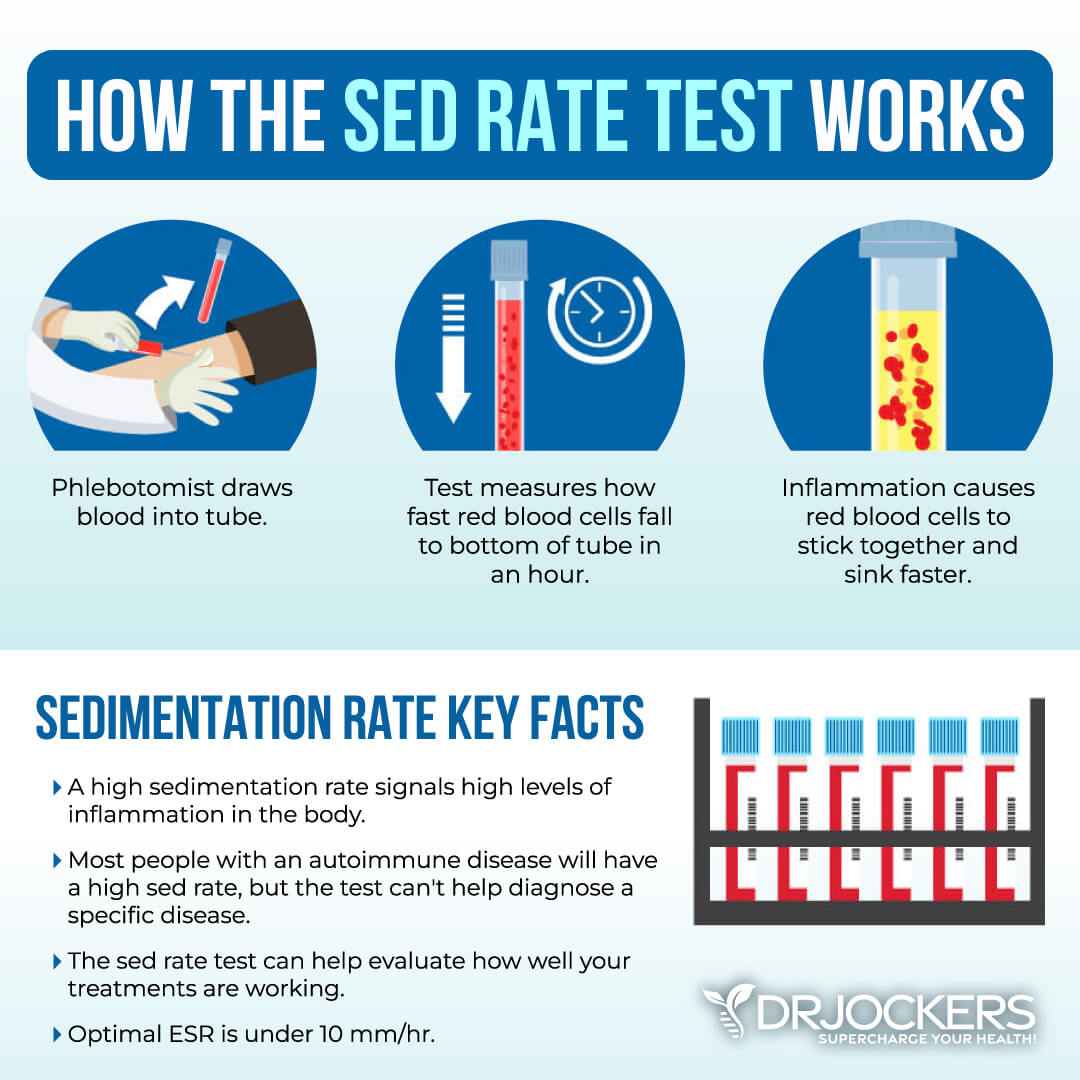
Platelets
Platelets are your smallest blood cells. They look like small plates in their inactive form. When a blood vessel becomes damaged, it will send a signal to your platelets that in response will then travel to the area. They then turn into their active form and contact with your broken blood vessels. They grow tentacles that look like an octopus to protect the broken area. Platelets essentially support coagulation to reduce bleeding by clotting blood.
The optimal ranges of platelets are 175 to 250. Thrombocytopenia refers to having low platelet levels. Low platelet levels are often associated with increased destruction of autoimmunity or making too few platelets due to cancer.
Certain infections, such as dengue fever, may also cause low platelet count. High platelet levels are usually linked to inflammation. Very high platelet levels over 400 may be linked to thrombocytosis, a coagulation disorder due to chronic inflammation.

Oxidative Stress
According to a 2021 paper published in Chronic Diseases and Translational Medicine, oxidative stress may play a role in post-viral syndrome and long hauler syndrome (21). Checking for the following blood markers can look for the signs and consequences of increased oxidative stress.
Serum Ferritin
Serum ferritin measures the level of ferritin in your body to detect iron deficiency anemia and other health issues.
Elevated serum ferritin levels may indicate inflammation, liver disease, autoimmune disease, or even cancer. The optimal range is 30 to 400 and the optimal range is 50 to 150 for females and 75 to 150 for males.

LDH
Lactate Dehydrogenase (LDH) is an enzyme found in all living cells. Its job is to help support energy production in the lactate and pyruvate cycle of glycolysis.
Elevated levels may indicate inflammation. Optimal levels are between 140 and 180. Levels over 180 indicate inflammation.

Homocysteine
Homocysteine is a common amino acid in your blood that you mostly get from eating meat. Homocysteine is particularly a good marker for cardiovascular issues.
The optimal range for homocysteine is between 6 and 9 umol/L. Some practitioners like to see it under 8 umol/L.

RDW
The size of your blood cells has to do with maturation and also depends on methylation agents, such as folate and vitamin B12. Red Blood Cell Distribution (RDW) markers are a great way to detect underlying inflammation in your body.
The clinical range is between 12.3 and 15.4 percent while the optimal range is 11.5 and 13 percent. When this level is above 13% it may be a sign that inflammation has impacted the development of the red blood cell.

Nutrients
According to a 2020 review published in Nutrients, we have to look at nutritional and nutrigenetic factors when it comes to immunity and viral infections (22). Nutritional deficiencies may increase the risk of infections, slow recovery, and contribute to post-viral syndrome.
Vitamin D
Vitamin D3 is an important vitamin that most of our population is deficient in. When you obtain vitamin D from sunshine or foods, it has to undergo two hydroxylations to get activated. The first hydroxylation takes place in your liver. This is where vitamin D converts into 25-hydroxyvitamin D (25(OH)D), or calcidiol. The second hydroxylation happens in the liver. This is where it changes into 1,25-dihydroxy vitamin D (1,25(OH)2D), or calcitriol, a physiologically active form of vitamin.
Poor levels of vitamin D may indicate inflammation. Vitamin D deficiency may also increase the risk of infections and post-viral syndrome. For example, according to a 2021 study published in the Journal of Virology, vitamin D deficiency may play a role in COVID-19 (23).

Zinc
Zinc is critical for your immune health. According to a 2020 review published in the International Journal of Infectious Diseases, zinc deficiency can increase the risk of poor outcomes in viral infections, including COVID-19 (24).
Checking your plasma zinc levels is the best way to determine zinc levels in your body. Checking your plasma zinc levels is the best way to determine zinc levels in your body. Ideal plasma zinc levels are between 90–135 ug/dL and for serum copper it should be 70–110 ug/dL.
Zinc and copper compete against each other as antagonists to regulate physiological pathways. A proper balance between the two is essential for maintaining good health. I recommend checking your plasma zinc and serum copper levels and their balance. The proper zinc: copper ratio should be between 1–1.2.

Serum B12
Vitamin B12 is important for blood cell formation, brain and mental health, heart health, energy, and other areas of your health. According to a 2022 review published in Nutrition Reviews, vitamin B-12 deficiency may play a role in viral infections (25).
While most reference ranges for vitamin B12 are between 190 and 950 picograms per milliliter (pg/mL) with 200 to 300 pg/mL being considered borderline, we see this level as being far too low. In Japan, a deficiency is found in levels under 550 pg/ml (400pM). Most B12 researchers and advanced functional nutritionists agree with the Japanese model.
For optimal health, I look for levels between 800 pg/mL and 2000 pg/mL. If your levels are under 800 pg/mL, you should definitely supplement with a high quality methyl-cobalamin form of B12.

Vitamin A
Vitamin A is essential for your immune system, eye health, bone health, and skin health. Vitamin D and vitamin A (retinol) are connected and work together. Calcitriol binds to the VDR in the cell nucleus. Once this happens, the vitamin A receptor (RXRA and RXRB) helps the activation of the VDR targets.
A 2008 study published in the National Reviews in Immunology has found that vitamin D and A play an important role in various immune processes and may help to prevent or treat inflammation and autoimmunity (26). Normal levels are between 15 to 60 micrograms per deciliter (mcg/dL) or 0.52 to 2.09 micromoles per liter (micromol/L).
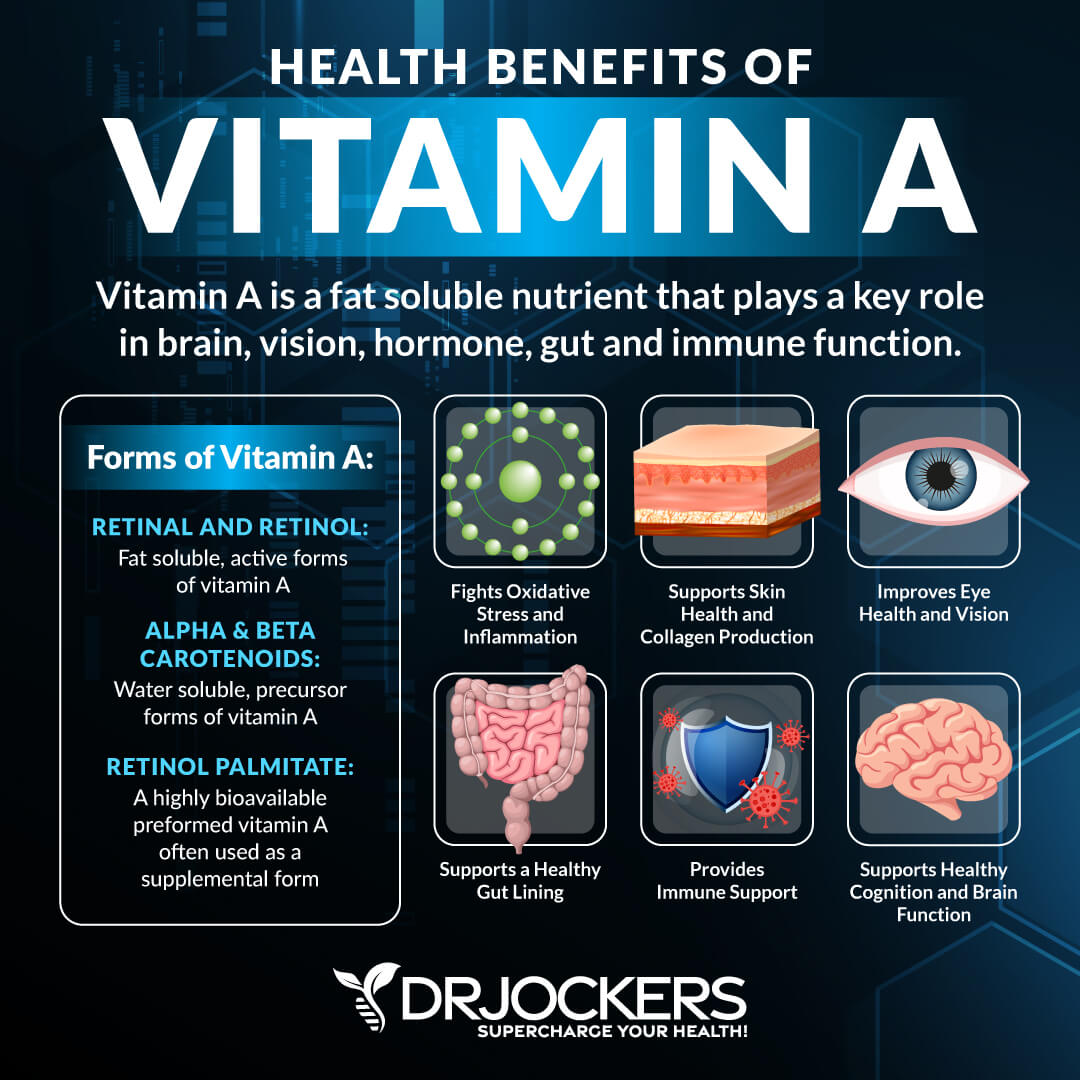
Comprehensive Blood Analysis
To receive a functional blood analysis and look at the optimal ranges of these markers, I recommend and regularly use a Comprehensive Blood Analysis (CBA), which is a very detailed blood test that looks at all of these markers of inflammation and other health functions.
This test is more sophisticated than most conventional doctors run. It looks at everything that a CBC and CMP do and more. It examines all parameters for inflammation, blood sugar levels, insulin levels, immune system function, thyroid function, parathyroid hormone levels, mineral and electrolyte balance, zinc and copper ratio, vitamin A and D levels, folate and vitamin B12 levels, a complete metabolic panel, complete blood count, liver function, kidney function, urinary tract health, nutrient deficiencies, and more.
I recommend getting the Comprehensive Blood Analysis done regularly both as a preventative measure and to monitor your inflammation levels and progress if you are on a treatment plan. Remember, our team is always happy to help to understand your results and create a personalized treatment protocol to regain your health and well-being naturally.
Natural Support Strategies
Post-viral syndrome can be a complex and frustrating condition. Fortunately, there are many natural support strategies.
Anti-Inflammatory Nutrition Plan
Immune dysfunction, inflammation, and oxidative stress may all play a role in post-viral syndrome. An anti-inflammatory nutrition plan may help to improve your immune health and reduce inflammation and oxidative stress. According to a 2021 review published in Clinical Nutrition ESPEN, an anti-inflammatory diet may help with viral respiratory infections (27). A 2020 review published in Frontiers in Immunology has found that an antioxidant-rich, anti-inflammatory nutrition may support the immune system and help with COVID-19-related pathogenesis (28).
Follow on anti-inflammatory, nutrient-dense whole foods, such as greens, vegetables, sprouts, herbs, spices, fermented food, grass-fed beef, pasture-raised poultry and eggs, wild-caught fish, and wild game. Eat lots of healthy fats, such as coconut oil, grass-fed butter and ghee, avocados, olives, and extra-virgin olive oil.
Add anti-inflammatory spices, such as turmeric, ginger, onion, garlic, oregano, basil, rosemary, and cinnamon. You may learn more about the anti-inflammatory diet I recommend for most people by reading this article.

Reduce Stress & Prioritize Good Sleep Habits
Reducing stress and prioritizing good sleep habits are essential for improving your overall health and supporting your body in fighting post-viral syndrome. According to a 2019 review published in Psychotherapy and Psychosomatics, stress-reduction strategies may help to improve the immune system (29). A 2021 review published in Pflugers Archives has found that sleep may help to reduce inflammation and support immune function (30).
According to a 2022 review published in the World Journal of Biology and Psychiatry, sleep deprivation may lead to mitochondrial dysfunction (31). Since mitochondrial dysfunction may play a role in post-viral syndrome, getting enough quality sleep to support your mitochondrial health is critical.
Reduce stressful situations and interactions with people that bring you down as much as you can. Stop scrolling the news and social media, select a specific time of the day for these activities instead. Spend time in nature regularly. Practice meditation, breathwork, gratitude, guided relaxation, and positive affirmation. Engage in activities that bring you joy. Spend time with friends, family, and a supportive community.
Avoid electronics, sugar, heavy foods, alcohol, and stress in the evening. Engage in relaxing activities before going to bed, including healing baths, reading, journaling, coloring, and crossword puzzles. Support your sleep with a comfortable mattress, pillows, and bedding, blackout curtains, and a sleep mask.

Daily Sunshine & Time in Nature
According to a 2021 study published in the Journal of Virology, vitamin D deficiency may play a role in post-viral syndrome (23). Sunshine is not only the best source of vitamin D, but according to a 2016 study published in Science Reports, sunshine may support your infection-fighting T cells and your immune system (32).
A 2021 review published in the International Journal of Environmental Research and Public Health has found that spending time in nature may also help to improve your immune system (33). Time in nature may also help to reduce stress, improve your mood, and support sleep.
I recommend spending daily time out in the sun and in nature. Do some grounding. Go for a stroll in a local park. Go for a hike. Ride your bike. Play with your kids and pets outside. Or simply read a book or have a picnic outdoors.

Intermittent Fasting
Intermittent fasting is a type of eating. It cycles between a period of fasting and a period of eating within one day. The most common form of intermittent fasting includes 16 hours of fasting including your overnight sleep and 8 hours reserved for your meals to meet your nutritional needs.
According to a 2018 study published in PLoS One, intermittent fasting may help to improve your mitochondrial health (34). A 2010 study published in Autophagy has found that short-term fasting may help autophagy or cellular renewal (35). Thus, intermittent fasting may help your recovery on a cellular level.
If you are new to fasting, start out slow. Start with a 10 or 12-hour fast and gradually increase your fasting window. Starting with Crescendo fasting and fasting only on certain days of the week can be a great way to start.
Gradually increase your fasting window and the number of days you are fasting if you are sleeping and recovering well. To learn more about the benefits of intermittent fasting and the best intermittent fasting strategies, I recommend this article. To learn more about Crescendo Fasting, I recommend reading this article.

Regular Movement
Regular movement and exercise have many health benefits that may support your recovery from post-viral syndrome. According to a 2021 review published in Clinical and Experimental Medicine, exercise can help to support your immune system (36). According to a 2021 review published in Frontiers in Physiology, exercise may also help to improve mitochondrial function supporting your health on a cellular level (37).
Begin with light movement without overwhelming your body. Go for a walk and gradually increase your distance and page each time. Stretch regularly. Try some stretching, yoga or Pilates for low-impact strength and resistance training and stress reduction. You may try working with a physical therapist to learn the right form and exercises at the appropriate difficulty for you.

Infrared Sauna and Epsom Salt Baths
Infrared sauna therapy is a form of sauna that uses infrared heaters that release infrared lights you experience as heat as it gets absorbed through the surface of the skin. Infrared sauna may help detoxification and immune function. According to a 2013 study published in the Journal of Human Kinetics, sauna use helps to improve your white blood cell profile, immune health, and cortisol levels (38). I recommend using an infrared sauna several times a week, if you can, daily.
Epsom salt may help to improve your magnesium levels, aid relaxation, reduce stress, improve sleep, support detoxification, and aid digestion. According to a 2015 review published in Physiology Reviews, it may help to support your overall health (39). I recommend regular Epsom salt baths if you have post-viral syndrome.
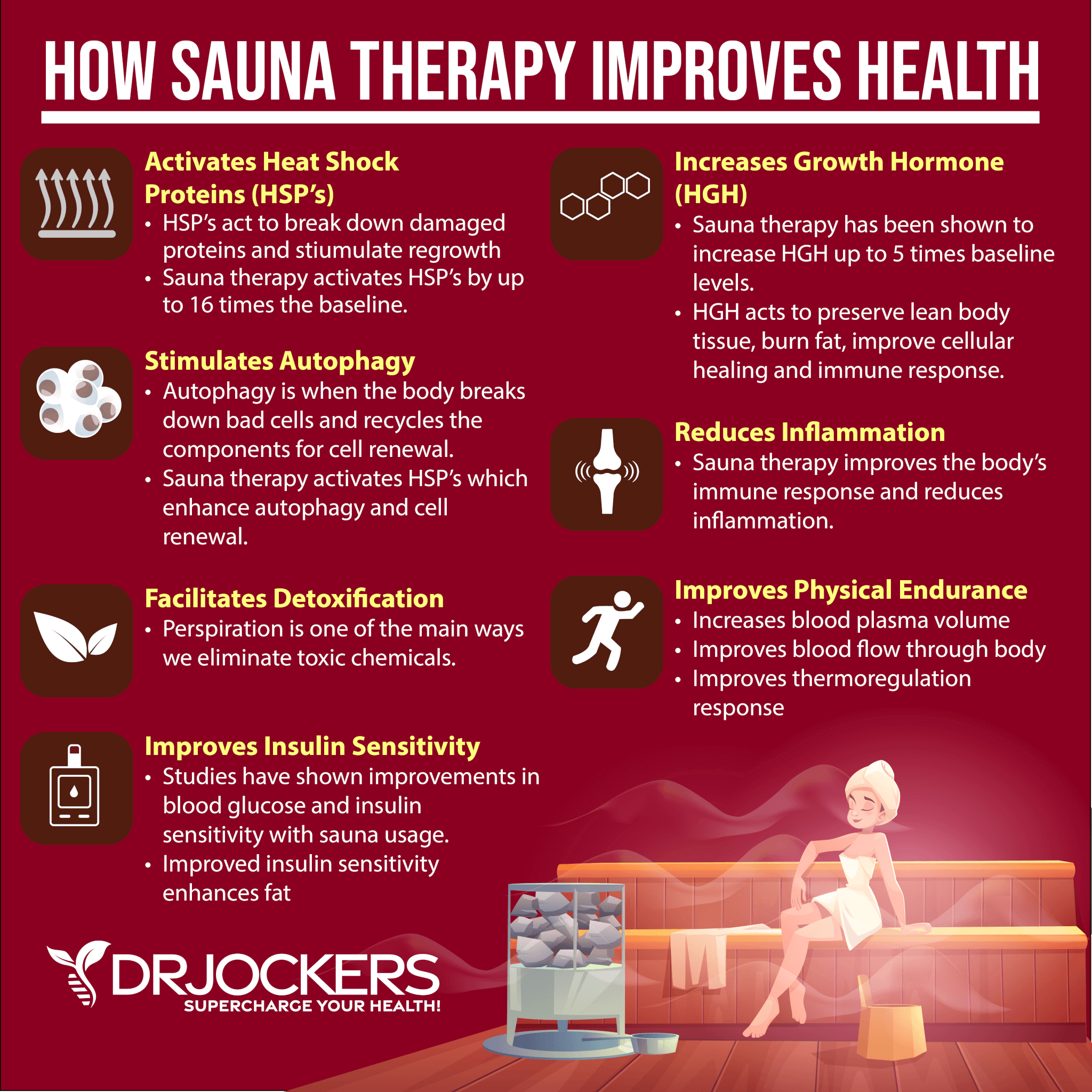
Key Supplements
There are a number of key supplements you may benefit from using. Here is what I recommend:
Vitamin D
According to a 2021 study published in the Journal of Virology, vitamin D deficiency may play a role in post-viral syndrome (23). To improve your vitamin D levels, I recommend spending time out in the sun and eating vitamin D-rich fatty fish, egg yolks, and beef liver. Most people are not getting enough sunshine or consuming enough vitamin D from food. Therefore, most people need supplements to optimize their vitamin D levels.
Pairing vitamin D3 with vitamin K2 helps improve calcium absorption and inflammation control. I recommend taking a vitamin D3 supplement with at least 3,000-5,000 IU’s of vitamin D3 and at least 90 mcg of vitamin K2.
Typically, taking 1,000 IU per 25 lbs. of body weight will help you get your levels into a healthy range. You want to test your vitamin D levels at least 1-2 times each year and get your levels between 50-100 ng/ml. It has been hypothesized that a therapeutic level for major health conditions is going to be between 70-100 ng/ml.

N-Acetyl Cysteine
N-Acetyl-L-Cysteine (NAC) comes from the amino acid L-cysteine and is often used for lung, respiratory, and immune health. According to a 1997 study, NAC may help to support immunity and fight viral infections (40).
A 2021 study published in Antioxidants has found that the combination of NAC and glycine may help to reduce oxidative stress and complications in COVID-19 (41). If you are experiencing symptoms of post-viral syndrome, you may benefit from supplementing with NAC.

Zinc
Zinc is essential for healthy immune function. A 2020 review published in the International Journal of Infectious Diseases has found that zinc deficiency can increase the risk of poor outcomes in viral infections, including COVID-19 (24).
I recommend eating plenty of foods that are rich in zinc, such as meat, poultry, shellfish, eggs, dairy, seeds, nuts, legumes, sweet potatoes, quinoa, and green leafy vegetables. Additionally, I recommend a zinc supplement for optimal zinc levels.

Quercetin
Quercetin is an antioxidant and flavanol found in many plant foods, including black currants, cherries, blueberries, black plum, cranberries, apples, grapes, sage, broccoli, olive oil, pepper, kale, romaine lettuce, red leaf lettuce, raw red onions, snap peas, cabbage, raw asparagus, sprouts, and herbs.
According to a 2016 review published in Nutrients, quercetin may help to reduce inflammation and improve immune health (42). I recommend that you eat plenty of quercetin-rich foods and take a daily quercetin supplement.

Selenium
Selenium is a powerful mineral with antioxidants, immune, mental, heart, and other health benefits. A 2008 review published in Molecular Nutrition and Food Research has found that selenium may support the immune response (43).
I recommend eating two Brazil nuts a day which includes your daily recommended selenium levels. Consuming sunflower seeds, cashews, mushrooms, spinach, seafood, meat, and eggs may also improve your selenium levels. If you are deficient in selenium, you may benefit from supplementation as well.

Magnesium
Magnesium is essential for your sleep, exercise performance, muscle health, blood sugar levels, mental health, and other areas of your health. According to a 2012 study published in the Journal of Research in Medical Sciences, magnesium may also help to decrease inflammation (44).
Unfortunately, most people are deficient in magnesium, and meeting your needs through food alone is difficult. I recommend supplementing with magnesium daily.

B Vitamins
B vitamins are critical for energy, brain and mental, and other areas of your health. According to a 2020 review published in Nutrients, B vitamins may support immune regulation (46). A 2022 review published in Nutrition Reviews has found that vitamin B-12 deficiency may play a role in viral infections (25).
I recommend eating foods rich in B vitamins, including dark leafy greens, grass-fed beef, pasture-raised eggs, nuts, and seeds. Additionally, I recommend using a daily B12 vitamin and a B vitamin complex.
Resveratrol
Resveratrol is a powerful antioxidant found in the skin of grapes, berries, and red wine. It greatly compliments the benefits of quercetin. According to a 2019 review published in Nutrients, resveratrol may help to improve the immune response (46). I recommend that you eat resveratrol-rich foods and take a resveratrol supplement daily.

CoQ10
Coenzyme Q10 is a powerful antioxidant your body produces naturally but you can also improve your levels through supplementation. As people age or if they encounter pathogens, stress, and toxins it can wear down their ability to produce CoQ10. According to a 2021 review published in Antioxidants (Basel), CoQ10 may support immune function (47).
All cellular energy production is dependent on the creation of CoQ10. As we get older, the production of this critical antioxidant declines and we do not get its protective benefits. Common signs that CoQ10 is low include wrinkled skin, poor energy levels, cardiovascular problems, and vision problems.
Those with post viral syndrome, have altered cellular metabolism and reduced CoQ10 levels and this is one of the main reasons they suffer from fatigue and brain fog. Supplementing with a highly absorbable form of CoQ10 in 200-600 mg daily can make a huge difference in energy and mental clarity among other things.

Bioactive Carbons
Bioactive carbon, including fulvic and humic acid, are organic compounds in humus, a part of the soil. It is the richest in decaying plants or animal matter. Bioactive carbons help to improve the soil and the health of plants. They are also incredibly rich in minerals and support detoxification from heavy metals and other organic compounds.
Bioactive carbons offer antioxidant protection, improve immune defense, microbiome support, and restoration of nutrients. According to a 2013 review published in Chemosphere, humic acid may help detoxification from pesticides (48). I recommend supplementing with bioactive carbons to help remove toxins and get more nutrients into the cells.
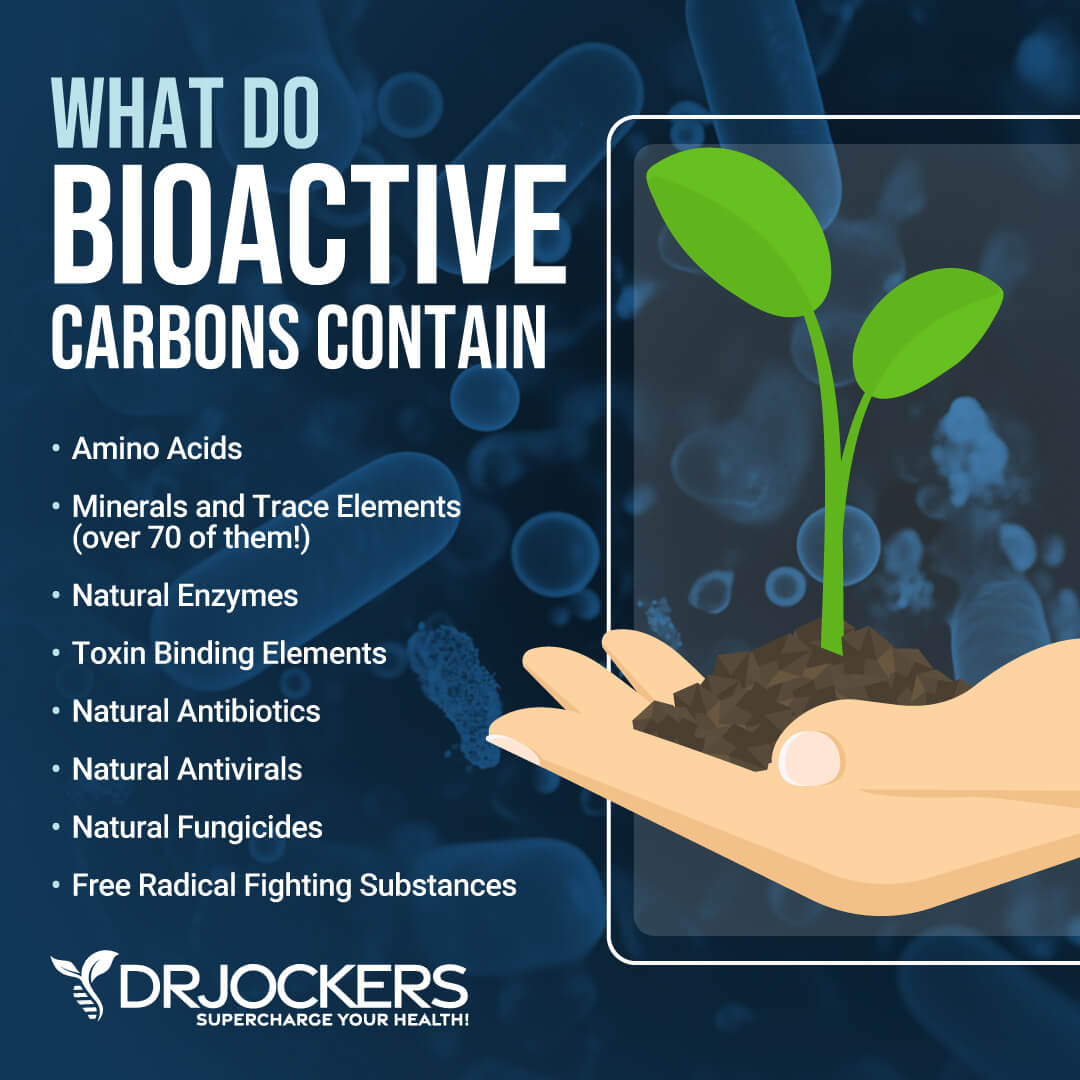
The Cellular Energy Support Pack
If you are experiencing symptoms of post-viral syndrome, I recommend our Cellular Energy Support Pack. This pack is loaded with all these nutrients and compounds I just recommended. The Cellular Energy Support Pack is designed to provide a rich array of critical nutrients that help to stabilize the cell and reinvigorate cellular energy production.
If you are struggling with low energy levels, brain fog or post-viral fatigue and sluggishness then these supplements will help you get back in balance and have the energy and mental stamina you need to thrive.
The key nutrients and compounds used in this pack include clinically effective doses of vitamin D3, zinc, vitamin C, coenzyme Q10, resveratrol, quercetin, N-acetyl cysteine, magnesium, vitamin K2, chromium, selenium, B vitamins, fulvic acid, vitamin A, amino acids, and trace minerals.
Immunocharge
One of the supplements in the pack is Immunocharge. This supplement offers antioxidant and antiviral benefits.
ImmunoCharge is specifically designed to provide you with optimal dosages of these key immune modulating nutrients and compounds. The synergy of these key nutrients and compounds strengthens immune function and improves the process of inflammation.
Each ImmunoCharge capsule contains the same amount of powerful immune modulating compounds. These include quercetin, resveratrol, vitamin D, vitamin A, selenium, zinc, vitamin C, N-Acetyl Cysteine, vitamin K2 and magnesium.
These ingredients support the body’s natural immune mechanism to help maintain good health. Rather than taking multiple different supplements to get these key nutrients, you can get the clinical dosages within 4 capsules daily of ImmunoCharge. I recommend taking 2 capsules twice daily with meals.
CT-Minerals
The pack also includes CT-Minerals. This product contains naturally occurring, highly refined and naturally chelated extracts of Fulvic Acid.
This means ultra small-sized and ultra-low-molecular-weight 100% organically complexed nano-sized negatively charged ionic molecules which can penetrate human tissue and blood cells easily. Because of these unique properties, this supplement is highly bioactive and can provide numerous biochemical and metabolic detoxification functions.
In addition to containing over 70 naturally occurring, plant-derived trace element minerals, it contains twelve amino acids in an unaltered ionic solution. It is the most rare and valuable of all humic substances known to man.
This supplement supports detoxification, energy, focus, and alertness. I recommend taking 1-2 capsules, twice a day.
 High Energy Support
High Energy Support
It also included High Energy Support. This is a high-powered multi-vitamin that helps to improve your daily energy levels, blood sugar levels, detoxification pathways, mood, and mental clarity. It also helps to reduce oxidative stress and inflammation.
Those dealing with post viral syndrome are often deficient in key nutrients and this supplement helps round out everything in a highly bioavailable form. I recommend taking 2 capsules twice a day with meals.
Super CoQ10
The last supplement in this pack is Super CoQ10. This supplement supports mitochondrial health, cellular energy, and brain, heart, and liver health. CoQ10 is a key antioxidant and increases cellular energy production.
This product helps improve the fatigue and brain fog related symptoms associated with post viral syndrome. I recommend taking 1 capsule twice a day with meals.
Final Thoughts
Post-viral syndrome refers to a group of chronic symptoms that can linger for days, weeks, months, and in some cases, even years after a viral infection despite recovering from the initial infection. If you are experiencing symptoms of post-viral syndrome, I recommend following my natural support strategies to support your health with nutrition, lifestyle, and supplementation.
If you want to work with a functional health coach, I recommend this article with tips on how to find a great coach. On our website, we offer long-distance functional health coaching programs. For further support with your health goals, just reach out—our fantastic coaches are here to support your journey.
Inflammation Crushing Ebundle
The Inflammation Crushing Ebundle is designed to help you improve your brain, liver, immune system and discover the healing strategies, foods and recipes to burn fat, reduce inflammation and Thrive in Life!
As a doctor of natural medicine, I have spent the past 20 years studying the best healing strategies and worked with hundreds of coaching clients, helping them overcome chronic health conditions and optimize their overall health.
In our Inflammation Crushing Ebundle, I have put together my very best strategies to reduce inflammation and optimize your healing potential. Take a look at what you will get inside these valuable guides below!
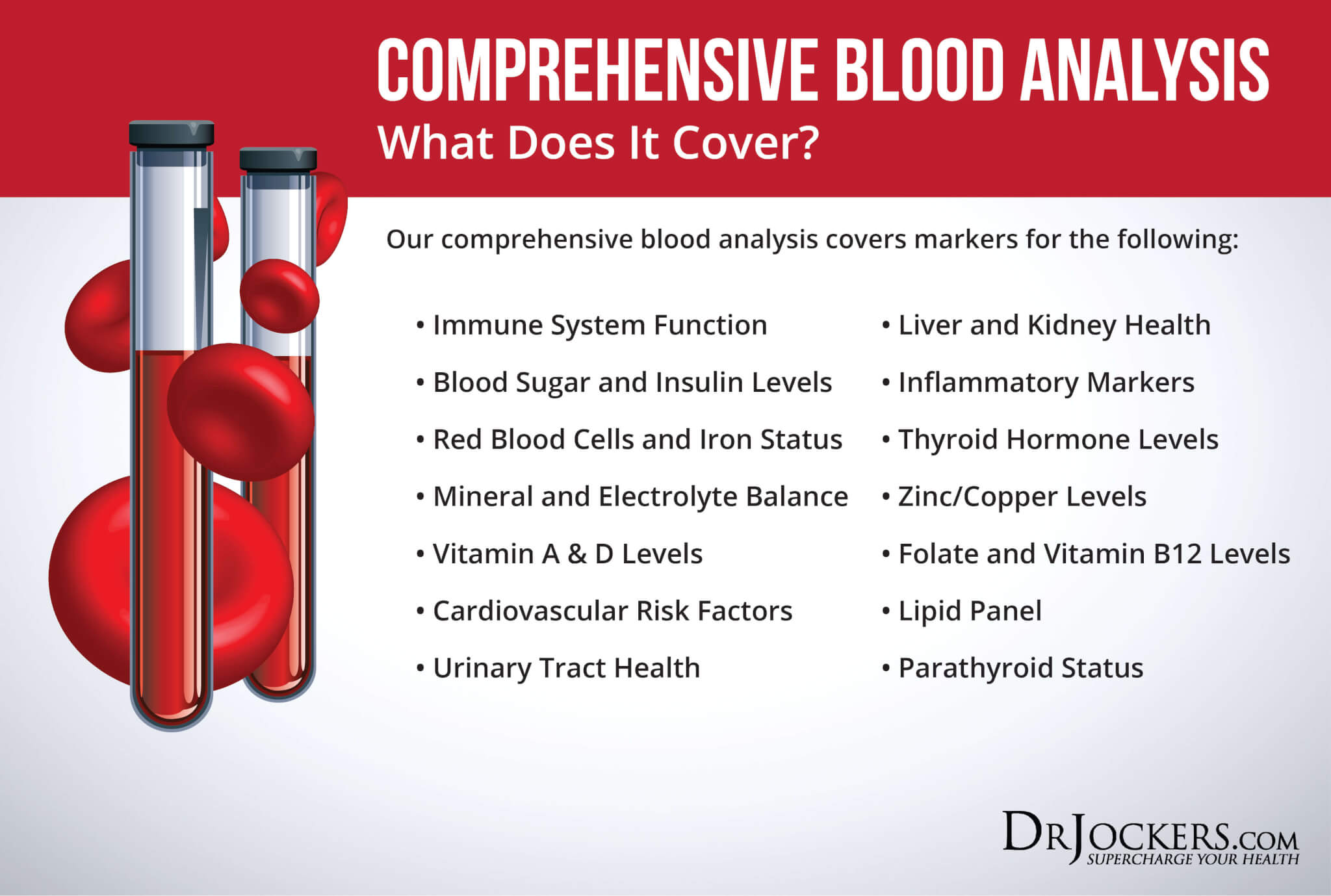

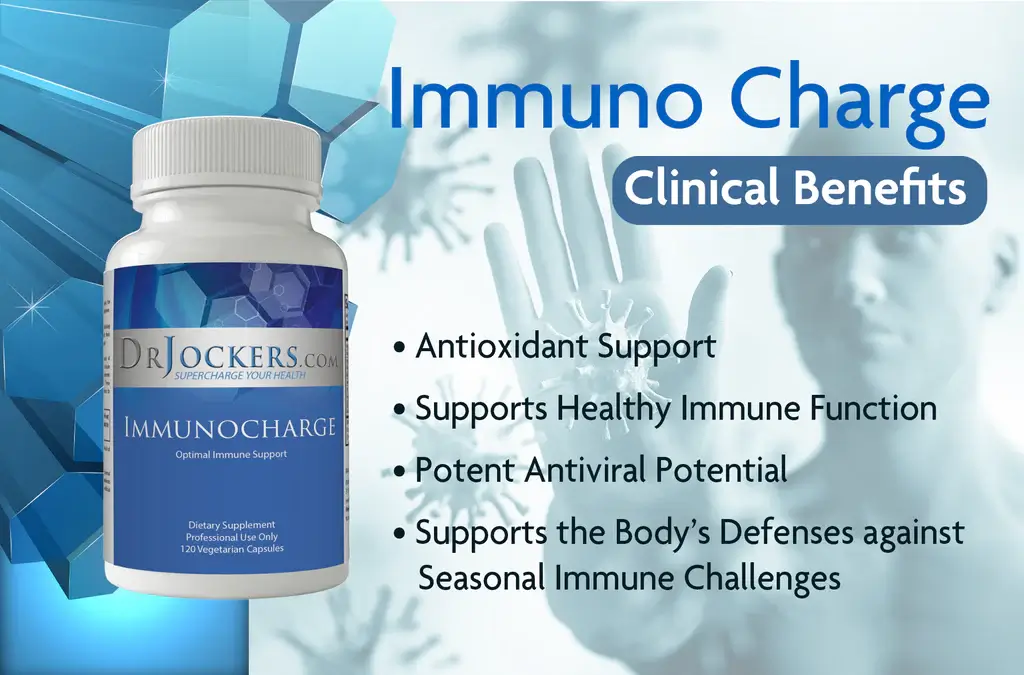






After 78 years I have come to the simple conclusion that Long Haul – Covid – Flu – Cold – URI’s are caused by the body using up it’s resources to fight these problems. Resources range from vitamins to minerals and to anything the body uses to clear the infections. I supplement with anything I think may help, fast, movement, and clean food. Studying all the way through this COVID fiasco the one thing I did not know was that the body does not store much Zinc. Therefore it is used up quickly and needs to be replaced quickly. Having said all that, my vote goes for the Terrain Theory.
Yes to terrain! 🙂 One thing though, if you are going to supplement with Zinc, definitely supplement with Copper as advised here… I didn’t for a while there, and the fatigue I felt was crippling… I ended up getting a nasty flu, and possibly even TB as I was coughing up blood for a while… all because I lowered my immunity by supplementing with things that I thought were boosting my immunity! Now I am supplementing with Copper, I am right as rain (as we say here in Blighty… and we sure do have enough of it!) Hahahaha!
The drug Harvoni did the same thing to so many people I wonder what was in this poison they gave us when we had a virus of Hep. C with a normal liver and living a normal life until the scared us into taking it that we would get liver cancer and pushed us through treatment even with the awful side effects they failed to tell us would happen to us it’s all about the money it all comes down to the money and nobody can help us all the same side effects as Covid long haulers bioweapon is what it is poison
Sorry to hear this! I would recommend finding a functional health practitioner to help address this: https://drjockers.com/functional-nutrition-tips-to-find-a-great-health-coach/
Brilliant article as always. Incredibly thorough! Thank you so much. I am particularly impressed by the mention of the Zinc to Copper balance (I’m reading the Morley Robbins book (Cure….) on this subject at the moment… it’s a brilliant resource… groundbreaking, in fact). I am also writing an article at the moment for my Substack about how to heal from Covid, and will be referencing this article, with your permission. I follow a lot of brilliant health writers, including yourself, and I am always astonished when Vitamin D is recommended without the need for Vitamin K2 7, and Zinc without the need for Copper… I come at things from a particular slant… healing oils and essential oils, but I always provide the ‘alt’ medical perspective as the basis of my writing… thank you again for being such a comprehensive and reliable source.
Thanks for sharing Rachel!
thank you verry much! I can´t find the healing protocoll?
Hello Petra, please reread the article, we go through it near the middle of the article all the way to the end with diet, good sleep, supplements, etc.
Hey Dr., Appreciate all your great articles! One of the charts in this article mentions “breathing issues” as a potential Long Covid symptom. Starting about two weeks after catching Covid (was a mild case), my wife informed me that I had started to snore and I also began waking up every hour or two from what I am thinking may be sleep apnea. Is this possibly one of the “breathing issues”?
Yes absolutely this is an issue with post viral syndrome.
Thank you for all this information. However, it is too much information for an elderly person as myself to comprehend, not to mention implement. My primary runs regular blood tests, but not as many detailed ones. I am pretty sure he wouldn’t run that many and I’m pretty sure medicare and sumplemental would not pay for them. Also,?I take quite a number of supplements now. I couldn’t take all that you mention and still be able to eat.? I wish there was a simpler protocol. Thank you.
Hello Clarise, yes that makes sense. We actually only have 4 supplements in our Cellular Energy Support pack. I would recommend finishing up your current supplements and not replacing them and only taking the Cellular Energy Support pack here: https://store.drjockers.com/products/cellular-energy-support-pack?_ga=2.227256603.7465029.1652009961-1145131331.1648235904
For the first time in my long life, i am having post-viral problems.\
Fortunately very few symptoms in your long list are manifested, mostly
some fatigue, refraining my usual fairly strenuous exercise routine and some
loss of appetite. I have been on intermittent fasting for more than three
years and usually am well-adapted, but am still eating even less (once
a day). As you have said, my doctor cannot give me anything for a viral infection,
so all I can do is to wait it out, try to strengthen my immune system, to switch strong
coffee for green tea, and take occasionally two 500 mg Panado tablets, never more than two a day. I am following your dietary instructions and they do agree with my intermittent fasting. I am not used to being sick, with fairly comprehensive annual blood tests, with good results. I will repeat them in the beginning of the new year when I can get more help from my medical insurance.
Yes and we would recommend working with a functional health practitioner to address this from a natural perspective.
Hello! I have a question about long COVID. Do the symptoms have to be continuous to be classified as such? For example, I had COVID in August 2021. I fully healed by the end of September 2021 and had good health for the next year. Since September 2022, however, I have been dealing with knee issues–the backs of my knees feel week and overstretched and start locking up/refuse to work after about 200 yards of walking. MRIs of the knee and full spine, nerve conduction studies, and blood and autoimmune testing have uncovered nothing. Trying to figure out if this could be long COVID or something else. Thanks for any ideas/input! (I am otherwise fit, healthy, vegetarian, mid-40s, you name it — this has been a flummoxing mystery.)
Hi Kelly, my name is George Carydakis.
I am amazed to read that you are having the exact same issue with the back of your knees as I am experiencing after Covid.
The Doctor told me it was cysts and sent me for Ultra sounds etc etc and as he said “oh that’s really strange it’s all clear” .
I keep telling him that this has only developed after Covid and he keeps looking at me funny.
A friend of mine sent me a link to this article and after reading it, even though I am taking 90% of the supplements recommended here, I am not taking some of them in conjunction for eg. Vitamin D with Vitamin K2 7, and Zinc with Copper.
So I will finish all the supplements I have here and begin with Dr Jockers Cellular Energy Support Pack.
I hope you get the answers and results you want, probably not form the medical establishment though.
All the best.
I’m dealing with long-haul COVID for over a year now. I am not able to work and this is a big concern. Are there any programs to help with the financial burden? I tried a disability lawyer but it will take 4 years I’m told to get any results and its not much money. I’m 59, normally a very active and health conscience person. I left my job because I count do it anymore, physically and mentally. I have most all of the symptoms on the list. Anxiety is high at times with the not knowing what’s going happen to me.All my life staying healthy, living , working hard, exercise through sports and then a stupid infection and I’m done. Would have been easier to die in a sporting accident.
Shouldn’t we judge whether we need hydroxy, adenosyl or methyl based on homocysteine levels for example?
Isn’t it better to use ubiquinol instead of ubiquinone?